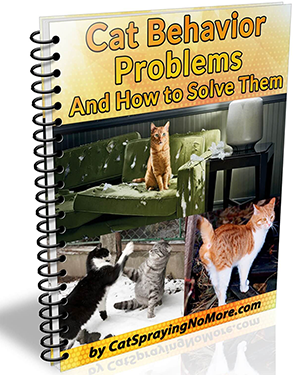Monthly Archives: July 2025
Grooming Mistakes Most Cat Owners Make
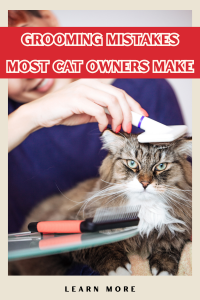
Cats are often perceived as self-sufficient grooming experts, meticulously cleaning themselves with their barbed tongues and nimble paws. This innate fastidiousness can sometimes lull cat owners into a false sense of security, leading them to believe that their feline companions require minimal, if any, human intervention in their grooming routine. However, this is a common misconception that can lead to a host of problems, from painful matting and skin irritations to behavioral issues.
While a cat’s self-grooming is impressive, it’s not always sufficient, especially for indoor cats, long-haired breeds, seniors, or those with health conditions. Recognizing and avoiding common grooming mistakes can make a world of difference in your cat’s comfort, health, and overall well-being. Let’s delve into the grooming missteps most cat owners make and how to avoid them.
1. Neglecting Regular Brushing (or Brushing Incorrectly)
This is arguably the most pervasive grooming mistake. Many owners underestimate the importance of regular brushing, assuming their cat’s self-grooming is enough.
- The Mistake: Not brushing often enough, especially for long-haired cats or heavy shedder breeds. Using the wrong type of brush, or brushing too harshly.
- The Impact: Leads to excessive shedding throughout the home, increased hairball formation (which can cause digestive blockages), and the development of painful mats and tangles. Harsh brushing can cause “brush burn” or skin irritation.
- The Solution: Establish a consistent brushing routine. For short-haired cats, 2-3 times a week may suffice. Long-haired cats often need daily brushing. Invest in appropriate tools: a de-shedding tool (like a Furminator for heavy shedders, used cautiously), a slicker brush, and a wide-toothed comb. Brush gently, always in the direction of hair growth, and pay extra attention to areas prone to matting like armpits, behind ears, and the belly.
2. Ignoring Matting (or Trying to Cut Them Out Incorrectly)
Mats are a serious problem that many owners either overlook or try to fix dangerously.
- The Mistake: Allowing small tangles to progress into large, dense mats. Attempting to cut out mats with scissors, which often results in accidentally cutting the cat’s skin.
- The Impact: Mats are incredibly painful, pulling on the skin and restricting movement. They can hide skin infections, parasites, and even impede blood flow. Cutting them out with household scissors is extremely risky due to how thin and mobile a cat’s skin is.
- The Solution: Prevention through regular brushing is key. If you find a small, loose mat, try to gently work it out with your fingers and a comb, starting from the edges. For larger, tighter, or skin-bound mats, do not attempt to cut them out yourself. This is a job for a professional groomer or veterinarian who can safely shave them off.
3. Improper Nail Trimming (or Skipping It Entirely)
Many owners fear trimming their cat’s nails, leading to overgrown claws.
- The Mistake: Not trimming nails at all, or cutting too much and hitting the “quick” (the blood vessel and nerve within the nail).
- The Impact: Overgrown nails can curve into the paw pads, causing excruciating pain, infection, and lameness. They can also snag on carpets and furniture, leading to broken claws or injuries. Hitting the quick causes pain and bleeding, making future trims terrifying for the cat.
- The Solution: Start young and make it a positive experience with treats. Use sharp, cat-specific nail clippers. Only snip the clear, pointed tip of the nail, avoiding the pink quick. If your cat has dark nails where the quick isn’t visible, trim only the very tip. Have styptic powder (or cornstarch/flour) on hand to stop bleeding if you accidentally cut too deep. If unsure, ask your vet or a groomer for a demonstration.
4. Infrequent or Incorrect Bathing
While most cats rarely need baths, some situations call for one, and owners often get it wrong.
- The Mistake: Bathing a cat too frequently (drying out skin/coat) or using human shampoos/soaps. Not preparing properly, leading to a stressful and dangerous experience for the cat.
- The Impact: Frequent bathing can strip essential oils from a cat’s skin and coat, leading to dryness, flakiness, and irritation. Human shampoos are formulated for a different pH balance and can cause skin problems. A chaotic bath experience can traumatize a cat, making future necessary baths impossible.
- The Solution: Only bathe when truly necessary (e.g., covered in something toxic/sticky, severe matting, veterinarian-prescribed medicated baths). Always use a cat-specific shampoo. Prepare everything beforehand: lukewarm water, rubber mat for traction, towels, cotton balls for ears, and treats. Keep the experience calm and quiet. Rinse thoroughly to prevent skin irritation from residue.
5. Neglecting Dental Care
While not strictly “coat” grooming, dental health is a critical part of overall grooming and is frequently overlooked.
- The Mistake: Assuming dry kibble cleans teeth, or ignoring bad breath as “normal cat breath.”
- The Impact: Dental disease (plaque, tartar, gingivitis, periodontal disease) is rampant in cats, causing pain, difficulty eating, and can lead to serious systemic health issues if bacteria from the mouth enter the bloodstream. Bad breath is a sign of infection, not just bad hygiene.
- The Solution: Start a home dental care routine with a cat-specific toothbrush and toothpaste (never human toothpaste!). Aim for daily brushing if possible. Provide dental treats or chew toys approved by your vet. Schedule regular professional dental cleanings at your vet’s office as recommended.
6. Ignoring Stress Signals During Grooming
Cats communicate discomfort, but owners often miss the cues.
- The Mistake: Pushing through when a cat is hissing, growling, swatting, or trying to escape.
- The Impact: Forcing grooming creates negative associations, leading to a cat that actively resists and becomes more aggressive during future attempts. It damages the bond of trust.
- The Solution: Pay attention to your cat’s body language. If they show signs of stress (tail flicking, flattened ears, dilated pupils, tense body, vocalization), stop the session. Keep sessions short and positive, ending before they get stressed. Break down grooming tasks into smaller steps and reward calm behavior with treats and praise.
7. Forgetting the Dewclaws
The dewclaw is often overlooked, leading to painful issues.
- The Mistake: Remembering to trim the main claws but forgetting the dewclaws (the small claw on the inner side of the front paws, like a thumb).
- The Impact: Since dewclaws don’t touch the ground, they don’t wear down naturally and are highly prone to growing into the paw pad, causing severe pain and infection.
- The Solution: Always check and trim the dewclaws during every nail trimming session.
8. Not Adapting Grooming to Age or Health Changes
A cat’s grooming needs change throughout their life.
- The Mistake: Maintaining the same grooming routine for a senior cat as for a young adult, or not adjusting for health conditions.
- The Impact: Older cats may have arthritis, making self-grooming painful or difficult, leading to mats and dirty coats. Cats with underlying health issues (e.g., obesity, dental pain) may also neglect self-grooming.
- The Solution: Be extra vigilant with grooming for senior cats or those with health problems. They will likely need more frequent brushing, bathing, and nail trims as they may be unable to reach certain areas. Consult your vet for advice tailored to their specific needs.
By understanding and rectifying these common grooming mistakes, you can transform a potentially stressful chore into a beneficial and bonding experience for both you and your feline companion. Proactive, gentle, and consistent grooming is a cornerstone of responsible cat ownership, ensuring your beloved cat lives a life of comfort, health, and endless purrs.
How to Bathe A Cat Without Stressing Them Out
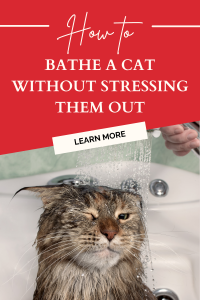
Splash Without Stress: A Gentle Guide to Bathing Your Cat
The mere mention of bathing a cat often conjures images of scratched arms, frantic meows, and a very unhappy feline. While many cats spend their lives avoiding water, there are times when a bath becomes a necessity – whether due to excessive soiling, matting, skin conditions, or even just a particularly messy adventure. The good news is that with the right preparation, a calm approach, and a focus on minimizing stress, bathing your cat doesn’t have to be a traumatic experience for either of you.
When is a Bath Necessary?
Unlike dogs, most cats are fastidious self-groomers and rarely require full baths. However, a bath might be warranted if:
- They’re heavily soiled: If your cat gets into something toxic, sticky, or truly filthy that self-grooming can’t handle.
- They have mobility issues: Older, arthritic, or overweight cats may struggle to groom themselves effectively.
- They have skin conditions: Your vet might recommend medicated baths for fleas, allergies, or other dermatological issues.
- They’re a long-haired breed: Some long-haired cats, especially those with very dense coats, can benefit from occasional bathing to prevent matting and manage shedding.
Preparation is Key: Set the Scene for Success
Before you even think about water, thorough preparation is crucial:
- Gather Your Supplies:
- Cat-specific shampoo: Never use human shampoo, as it can irritate your cat’s skin.
- Several towels: Have at least two large, absorbent towels ready.
- Rubber mat or towel for the tub/sink: This provides traction and prevents slipping, which can be very unsettling for a cat.
- Cotton balls: For gently plugging ears to prevent water from entering.
- A small cup or spray nozzle: For rinsing.
- Treats and toys: For distraction and positive reinforcement.
- Grooming brush/comb: To brush your cat before the bath.
- Pre-Bath Grooming: Always brush your cat thoroughly before a bath. This helps remove loose fur and, more importantly, any mats. Wet mats tighten and become almost impossible to remove without painful pulling.
- Trim Nails: Consider trimming your cat’s nails beforehand. This not only makes them more comfortable but also protects you from accidental scratches.
- Create a Calm Environment: Close bathroom doors and windows to prevent escapes. Ensure the water temperature is lukewarm – test it on your inner wrist. A quiet environment with no sudden loud noises is ideal.
The Gentle Bathing Process: Slow and Steady Wins the Race
- Introduce Water Gradually: Don’t just plunk your cat into a full tub of water. Instead, use a shallow amount (a few inches) at the bottom of a sink or tub with a rubber mat. Gently lower your cat in. If using a spray nozzle, keep the pressure low and steady.
- Start from the Neck Down: Wet your cat’s body, avoiding their face and ears. Use the cotton balls in their ears if they tolerate it. You can use a damp washcloth to gently wipe their face later.
- Apply Shampoo Gently: Apply a small amount of cat-specific shampoo, starting from the neck and working your way down to the tail. Lather gently, massaging the coat. Speak in a calm, soothing voice throughout the process.
- Thorough Rinsing is Critical: This is one of the most important steps. Residue from shampoo can irritate your cat’s skin and coat, leading to licking and discomfort. Rinse thoroughly with lukewarm water until the water runs clear and there are no suds left. Again, avoid the face and ears.
- The Towel Wrap: Once rinsed, immediately wrap your cat snugly in a warm, dry towel. Gently blot and rub to absorb as much water as possible. You may need a second towel.
- Warmth and Comfort: Move your cat to a warm, draft-free room to finish drying. You can gently blow-dry on a very low, cool setting if your cat tolerates it, but most prefer towel drying followed by self-grooming. Never use high heat, as it can burn their skin.
- Positive Reinforcement: The moment the bath is over, reward your cat with their favorite treats, praise, and gentle petting. This helps create a positive association with the experience.
Troubleshooting and Patience
- Don’t Force It: If your cat becomes overly stressed or aggressive, stop the bath and try again another day. Forcing them will only make future baths harder.
- Start Young: If you have a kitten, gently introduce them to water early to accustom them to the sensation.
- Consider a Professional: If your cat is truly impossible to bathe at home, a professional groomer or your veterinarian might be able to help.
While bathing a cat may never be their favorite activity, by approaching it with patience, calmness, and proper technique, you can minimize their stress and ensure their health and hygiene needs are met without turning it into a full-blown battle.
Beyond the Bathtub: Why Grooming Matters for Every Indoor Cat
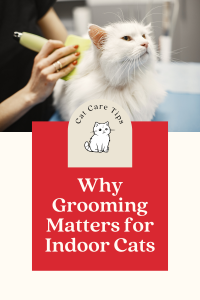
The image of a majestic, wild cat meticulously cleaning its fur is ingrained in our minds. Our domestic felines carry this innate drive for cleanliness, often spending a significant portion of their waking hours meticulously licking, biting, and pawing at their coats. This incredible self-grooming ability sometimes leads cat owners to believe that indoor cats, safe from the elements and outdoor grime, require minimal, if any, human intervention in their grooming routine. However, this couldn’t be further from the truth.
While indoor cats may not encounter the same level of dirt and debris as their outdoor counterparts, the very act of living indoors presents unique grooming challenges that necessitate our attention. Neglecting an indoor cat’s grooming needs can lead to a cascade of problems, impacting not only their appearance but more crucially, their health and comfort. Let’s delve into why grooming is not just a luxury, but a vital component of care for every indoor cat.
1. The Silent Threat: Hairballs and Digestive Health
This is perhaps the most well-known reason why indoor cats need regular grooming. Cats shed continuously, and their barbed tongues, while efficient at removing loose hair, also mean they ingest a significant amount of it. For outdoor cats, some of this hair might be naturally shed or caught on outdoor surfaces. For indoor cats, almost all shed hair ends up in their digestive system.
While occasional hairballs are normal, an excessive accumulation of ingested hair can lead to a range of digestive issues. Large hairballs can cause blockages, leading to vomiting, constipation, reduced appetite, and in severe cases, even require surgical removal. Regular brushing, especially for long-haired breeds or those prone to heavy shedding, helps remove loose hair before it’s swallowed, drastically reducing the risk of hairball formation and promoting a healthier digestive system.
2. Matting: A Painful and Potentially Dangerous Problem
Mats are dense clumps of tangled fur that form when loose, dead hair isn’t removed from the coat. While more common in long-haired breeds, even short-haired cats can develop mats, particularly in high-friction areas like behind the ears, under the legs, or around the hindquarters. For indoor cats, factors like static electricity (common in dry indoor environments) and lack of natural elements (like wind or rough surfaces that might help shed hair) can exacerbate matting.
Mats are incredibly painful. They pull on the cat’s skin, restricting movement and causing discomfort. Beyond the pain, mats can lead to:
- Skin Irritation and Infections: Trapped moisture, dirt, and bacteria beneath mats create a perfect breeding ground for skin infections, hot spots, and parasitic infestations.
- Restricted Blood Flow: Severe, tight mats can even impede circulation to certain areas of the skin.
- Difficulty Grooming Themselves: Once mats form, cats find it even harder to groom themselves, creating a vicious cycle.
Regular brushing and combing prevent mats from forming by removing loose hair before it has a chance to tangle. If mats are already present, professional grooming might be necessary to safely remove them without injuring the cat.
3. Skin and Coat Health: Beyond Just Hair
A cat’s coat is a reflection of its overall health. Regular grooming sessions offer an invaluable opportunity to:
- Distribute Natural Oils: Brushing helps to spread the natural oils produced by your cat’s skin throughout their coat, keeping it healthy, shiny, and waterproof. This natural barrier protects their skin from dryness and irritation.
- Monitor for Skin Issues: During grooming, you can inspect your cat’s skin for any lumps, bumps, sores, rashes, dry patches, fleas, ticks, or other parasites. Early detection of these issues can lead to quicker and more effective treatment.
- Reduce Allergens: For human allergy sufferers, regular brushing can help reduce the amount of dander (dead skin flakes) and loose fur in the environment, potentially easing allergy symptoms.
4. Nail Care: Preventing Pain and Damage
Indoor cats don’t have the same opportunities as outdoor cats to naturally wear down their claws by climbing trees or walking on rough surfaces. As a result, their nails can grow excessively long, leading to:
- Ingrown Nails: The most painful consequence, where the nail curls around and grows into the paw pad, causing severe pain, lameness, and infection.
- Snagging and Tearing: Long nails are more prone to getting caught on carpets, blankets, or furniture, potentially leading to painful tears or broken claws.
- Behavioral Issues: Pain from long nails can make cats irritable, reluctant to jump or play, and can even contribute to litter box avoidance if stepping becomes uncomfortable.
Regular nail trimming (typically every 2-4 weeks) is crucial for indoor cats to prevent these issues.
5. Early Detection of Health Problems
Grooming sessions are more than just cosmetic. They serve as a routine “health check.” By regularly handling your cat and examining their fur and skin, you are more likely to notice subtle changes that could indicate an underlying health issue. This includes:
- Changes in Weight: Feeling ribs or a prominent spine could signal weight loss; difficulty feeling them could indicate weight gain.
- Lumps or Bumps: Any new growths should always be checked by a veterinarian.
- Sore Spots: Your cat might flinch or react to touch in a particular area, indicating pain.
- Unusual Odors: Persistent bad odors from the coat, mouth, or ears can signal infections or other problems.
- Dental Issues: While not direct grooming, it’s an excellent time to peek at their teeth for signs of tartar or gum disease.
6. Behavioral Benefits and Bonding
Grooming can be a deeply bonding experience for you and your cat. Regular, gentle grooming sessions, especially if introduced early and positively reinforced with treats and praise, can strengthen your relationship. For some cats, grooming is incredibly soothing.
Furthermore, proper grooming can prevent behavioral issues. Cats that are uncomfortable due to mats or painful nails may become irritable, aggressive, or withdrawn. By addressing these physical discomforts, you contribute to a happier, more well-adjusted cat.
Conclusion: A Commitment to Well-being
In conclusion, the notion that indoor cats are exempt from regular grooming is a misconception. From preventing painful mats and dangerous hairballs to ensuring healthy skin and allowing for early detection of health issues, grooming is an indispensable part of responsible cat ownership. It’s an act of love that contributes significantly to your indoor cat’s comfort, health, and longevity, ensuring they continue to purr contentedly for years to come. So, grab that brush, gentle clippers, and embark on a regular grooming routine – your cherished feline companion will thank you for it.
How to Trim Your Cat’s Nails at Home
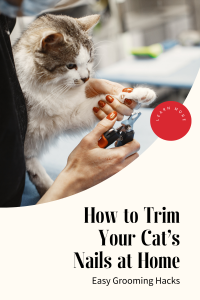
Paw-dicure at Home: A Gentle Guide to Trimming Your Cat’s Nails
Trimming your cat’s nails can seem like a daunting task, filled with visions of scratches and struggles. However, with the right approach, patience, and a little practice, it’s a vital grooming ritual that can be a stress-free experience for both you and your feline friend. Regular nail trims are essential for your cat’s health and well-being, preventing painful ingrown nails, reducing damage to furniture, and making playtime much safer for everyone involved.
Why Trim Your Cat’s Nails?
Unlike dogs, cats’ claws are retractable, but they still grow continuously. Without regular trimming, they can become too long, curving inward and potentially growing into their paw pads, causing pain, infection, and difficulty walking. Long nails can also snag on carpets or furniture, leading to painful tears or injuries. Beyond these health considerations, trimmed nails simply make living with your cat more comfortable for both of you, reducing accidental scratches during play or petting.
What You’ll Need: The Right Tools
Before you begin, gather your supplies:
- Cat-Specific Nail Clippers: There are various types, including scissor-style and guillotine-style. Choose the type you feel most comfortable with. Ensure they are sharp to make a clean cut.
- Styptic Powder (or cornstarch/flour): This is your safety net. In case you accidentally cut too deep and hit the “quick” (the sensitive part of the nail containing blood vessels and nerves), styptic powder will quickly stop the bleeding.
- Treats: Positive reinforcement is key! Have plenty of your cat’s favorite treats on hand.
- A Towel (optional): For wrapping a wriggly cat if needed.
- Good Lighting: Essential for clearly seeing the nail.
The Gentle Approach: Steps for Success
- Choose the Right Time: Select a moment when your cat is relaxed and calm, perhaps after a nap or during a quiet cuddling session. Avoid times when they are overly playful or stressed.
- Get Them Used to Paw Handling: If your cat isn’t accustomed to having their paws touched, start slow. Gently touch their paws, extending a toe and then releasing it, rewarding with treats and praise. Do this frequently until they are comfortable.
- Identify the Quick: Hold your cat’s paw gently and extend a claw by gently pressing on the top of the paw and the paw pad. You’ll see the translucent claw. Inside, there’s a pinkish area – this is the quick. You want to cut only the clear, pointed tip of the nail, avoiding the quick. For dark-nailed cats, the quick is harder to see, so err on the side of caution and only snip the very tip.
- The Snip: With your clippers, make a swift, clean cut just below the quick. If you’re unsure, it’s always better to cut too little than too much. You can always trim more later.
- One Nail at a Time (if necessary): Don’t feel pressured to do all 18 claws at once (remember, cats have five toes on each front paw and four on each back paw, with the dewclaw on the inner front paw). If your cat becomes agitated, stop, give them a treat, and try again later. Focus on getting one or two nails done per session if that’s all they can tolerate.
- Positive Reinforcement: After each successful trim (or even just trying), lavish your cat with praise and immediate treats. This creates a positive association with nail trimming.
- Address Any Accidents: If you accidentally cut the quick and it bleeds, don’t panic. Apply styptic powder or cornstarch/flour with gentle pressure until the bleeding stops. Reassure your cat and stop the session for the day.
Tips for a Smoother Experience:
- Start Young: Introduce nail trimming early in your cat’s life to acclimate them.
- Consistency is Key: Trim nails every 2-4 weeks, depending on your cat’s growth rate. Regular trims make the quick recede, making future trims easier.
- Wrap if Needed: For a very squirmy cat, gently wrap them in a towel (leaving one paw exposed at a time) for added security.
- Enlist Help: A second person can help hold and distract your cat with treats while you trim.
- Stay Calm: Cats pick up on your energy. If you’re stressed, they will be too.
- Know When to Call a Pro: If you’re truly uncomfortable or your cat is overly aggressive, don’t hesitate to ask your veterinarian or a professional groomer for assistance. They can often provide a demonstration or trim the nails for you.
With patience, positive reinforcement, and the right tools, trimming your cat’s nails at home can become a routine part of their care, contributing significantly to their overall health and comfort.
10 Vet-Approved Tips for a Healthier Cat!
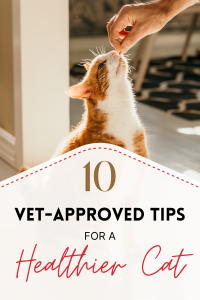
Unlocking a Lifetime of Purrs: 10 Vet-Approved Tips for a Healthier Cat
Cats are enigmatic creatures, celebrated for their independence, grace, and sometimes, their mysterious ways. As devoted cat parents, we want nothing more than for our feline companions to live long, healthy, and happy lives. While their self-sufficient nature might lead some to believe they require minimal care, the truth is that proactive measures and attentive observation are key to ensuring their well-being. To help you navigate the world of feline health, we’ve compiled ten vet-approved tips that can make a significant difference in your cat’s vitality and longevity.
1. The Foundation of Health: A High-Quality, Balanced Diet
Just like humans, a cat’s health begins with what they eat. Cats are obligate carnivores, meaning their bodies are designed to thrive on a diet rich in animal protein. Look for cat foods where meat, poultry, or fish are listed as the primary ingredients. Avoid foods with excessive fillers, by-products, or artificial additives.
Veterinarians often recommend incorporating wet food into your cat’s diet, as it provides crucial hydration that dry kibble alone often lacks. Many cats, especially those on an exclusively dry food diet, can be chronically dehydrated, which can contribute to urinary tract issues and kidney problems. Discuss your cat’s age, activity level, and any specific health concerns with your veterinarian to determine the best nutritional plan and appropriate portion sizes. Free-feeding (leaving food out all day) can lead to obesity, a common and serious health issue in cats.
2. Hydration is Key: Encouraging Ample Water Intake
Building on the previous point, proper hydration is paramount. Cats, as descendants of desert dwellers, don’t have a strong thirst drive. This makes it challenging to ensure they drink enough water. Beyond wet food, consider investing in a pet water fountain, as many cats are attracted to the flowing water. Offer multiple water bowls in different locations, ensuring they are clean and refilled daily. Some cats even prefer ceramic or glass bowls over plastic.
3. The Power of Prevention: Regular Veterinary Check-ups
Even if your cat appears perfectly healthy, annual (or biannual for senior cats) veterinary check-ups are non-negotiable. These routine visits allow your vet to perform a thorough physical examination, detect subtle changes that might indicate early-stage health issues, and keep vaccinations up-to-date. Early detection of conditions like dental disease, kidney disease, hyperthyroidism, or diabetes can lead to more effective treatment and a better prognosis. Your vet can also provide personalized advice on parasite prevention (fleas, ticks, worms) based on your cat’s lifestyle.
4. Dental Health Matters: Beyond Fresh Breath
Dental disease is one of the most common health problems in cats, affecting a vast majority of felines over the age of three. Plaque and tartar buildup can lead to gingivitis, painful extractions, and even systemic health issues if bacteria from the mouth enter the bloodstream.
While regular professional dental cleanings under anesthesia are often necessary, you can support your cat’s oral health at home. Introduce tooth brushing with a cat-specific toothbrush and toothpaste (never human toothpaste!) gradually and patiently. Dental treats and certain dental diets can also help, but always consult your vet for the most effective strategies for your cat.
5. Get Them Moving: Regular Exercise and Play
Obesity is a growing epidemic among domestic cats, leading to a myriad of health problems including diabetes, arthritis, and heart disease. Regular exercise is crucial for maintaining a healthy weight and providing mental stimulation.
Engage your cat in interactive play sessions daily using wand toys, laser pointers (but always end with a tangible reward like a treat to prevent frustration), or puzzle feeders that encourage them to “hunt” for their food. Cat trees, climbing shelves, and scratching posts satisfy their natural instincts to climb, scratch, and observe their surroundings from elevated perches, contributing to both physical and mental well-being.
6. The Litter Box Lowdown: Cleanliness and Accessibility
A clean and appropriately placed litter box is vital for both your cat’s physical and psychological health. Cats are fastidious creatures and can develop litter box aversion if their environment isn’t up to their standards.
Scoop the litter box at least once daily, and thoroughly clean and replenish the litter entirely every 1-2 weeks, depending on the type of litter. The general rule of thumb for multi-cat households is one litter box per cat, plus one extra. Ensure the litter box is in a quiet, accessible location, away from their food and water bowls. Changes in litter box habits (e.g., urinating outside the box, straining, frequent visits) warrant immediate veterinary attention, as they can be signs of serious medical conditions.
7. Grooming for Good Health: More Than Just a Pretty Coat
While cats are renowned self-groomers, they still benefit from human assistance, especially long-haired breeds or those with mobility issues. Regular brushing helps to remove loose fur, preventing uncomfortable mats and reducing hairballs. It also stimulates blood circulation to the skin and distributes natural oils, leading to a healthier, shinier coat.
Use grooming sessions as an opportunity to check for any lumps, bumps, parasites, or skin irritations. Regular nail trims are also important to prevent ingrown nails and discomfort. If your cat resists grooming, introduce it gradually with positive reinforcement.
8. Mental Stimulation and Environmental Enrichment:
Boredom can lead to stress and behavioral problems in indoor cats. Provide a stimulating environment with a variety of toys, scratching surfaces (both horizontal and vertical), and opportunities for vertical exploration (cat trees, shelves). Rotate toys regularly to keep things interesting. Consider window perches where your cat can watch birds and the outside world. Puzzle toys that dispense treats can also provide engaging mental challenges.
9. Spay or Neuter: A Crucial Step for Health and Behavior
Spaying or neutering your cat offers numerous health and behavioral benefits. For females, it eliminates the risk of uterine infections and tumors, and significantly reduces the risk of mammary cancer. For males, it reduces the risk of testicular cancer and certain prostate problems. Beyond health, it often curtails undesirable behaviors such as spraying, roaming, aggression, and the incessant vocalization associated with heat cycles. It also plays a vital role in controlling pet overpopulation.
10. Be an Observer: Recognizing Subtle Changes
Cats are masters at hiding illness, a survival instinct from their wild ancestors. As a result, subtle changes in their behavior or routine can be the earliest indicators of a health problem. Pay close attention to changes in appetite, thirst, litter box habits (frequency, volume, consistency), activity levels, sleep patterns, grooming habits, and vocalizations. Any sudden or persistent changes warrant a call to your veterinarian. Early intervention can make a world of difference in the outcome of many conditions.
By implementing these ten vet-approved tips, you’re not just providing basic care; you’re actively investing in your cat’s long-term health and happiness. A healthy cat is a happy cat, and the bond you share will only grow stronger with every purr.
7 Signs Your Cat Needs A Grooming Session

Decoding the Signals: 7 Undeniable Signs Your Feline Friend Needs a Grooming Session
Our feline companions are masters of subtle communication. From the gentle blink of an eye to the rhythmic purr, they have their own unique language. Among the many messages they convey, understanding when your cat needs a grooming session is crucial for their health, comfort, and overall well-being. While some cats are fastidious self-groomers, even the most diligent felines can benefit from a little extra help. Recognizing the signs early can prevent discomfort, matting, skin issues, and even potential health complications. Here are seven undeniable indicators that your beloved cat is due for some pampering:
1. The Tangled Tale: Noticeable Mats and Knots in Their Fur
One of the most obvious and concerning signs that your cat needs grooming is the presence of mats or knots in their fur. These tangled clumps are more than just unsightly; they can be incredibly painful for your cat. Mats typically form in areas where friction is common, such as behind the ears, under the legs, along the back, and near the tail.
The formation of mats begins with loose fur that doesn’t get brushed away. As the cat moves and grooms, this loose fur intertwines with healthy hair, creating small tangles. Over time, these tangles tighten and grow larger, forming dense mats that pull on the skin. This pulling can cause significant discomfort, restricting movement and even leading to skin irritation, bruising, and infections underneath the mat.
Furthermore, mats can trap moisture, dirt, and debris close to the skin, creating a breeding ground for bacteria and parasites. In severe cases, matted fur can even impede blood circulation. If you notice any mats or knots, especially if they are large or close to the skin, it’s a clear indication that your cat needs professional grooming assistance. Trying to remove large, tight mats yourself can accidentally injure your cat, so seeking expert help is always the safest option.
2. An Overabundance of Shedding: More Than the Usual Fluff
While shedding is a natural process for cats, an excessive increase in the amount of fur they are losing can be a sign that they need grooming. Regular brushing helps to remove loose and dead hair, preventing it from being shed all over your home. When this loose fur isn’t removed, it can contribute to matting and also means your cat is likely ingesting more hair during their own grooming sessions, potentially leading to more frequent and larger hairballs.
If you find yourself constantly sweeping up piles of fur, or if your cat’s coat appears thinner or less lustrous than usual, it could indicate that they need help removing the excess dead hair. A thorough brushing session can significantly reduce shedding and improve the overall health and appearance of their coat. For long-haired breeds, regular and consistent brushing is even more critical to manage shedding effectively.
3. A Dull and Lifeless Coat: Losing Their Natural Shine
A healthy cat’s coat should have a natural sheen and vibrancy. When a cat’s grooming needs are not being met, their fur can start to look dull, dry, and even greasy in some areas. This lack of luster can be due to a buildup of dead hair, dirt, and oils on the surface of the coat.
Regular brushing helps to distribute the natural oils produced by your cat’s skin throughout their coat, keeping it healthy and shiny. When these oils aren’t properly distributed, the coat can lose its natural protective barrier, making it more prone to dryness and tangling. A dull coat is a visual cue that your cat isn’t able to effectively groom themselves or that they have an excess of dead hair that needs to be removed through brushing.
4. Excessive Scratching and Licking: Signs of Skin Irritation
While some scratching and licking are normal cat behaviors, a noticeable increase in these activities can indicate skin irritation or discomfort, often linked to inadequate grooming. Mats and tangled fur can pull on the skin, causing itching and irritation. Trapped dirt, debris, and even parasites within the coat can also lead to excessive scratching and licking in an attempt to find relief.
If you observe your cat constantly scratching, particularly in specific areas, or if they are excessively licking, leading to bald patches or inflamed skin, it’s important to consider whether their grooming needs are being met. Addressing any matting or buildup of debris through grooming can often alleviate these skin issues. However, if the scratching and licking persist even after grooming, it’s crucial to consult with a veterinarian to rule out any underlying medical conditions or allergies.
5. Visible Dirt and Debris: A Coat That Needs a Clean Sweep
Cats are generally meticulous about their cleanliness, but sometimes they need our help to keep their coats free of dirt and debris. If you start noticing visible dirt, dust, or even small pieces of litter clinging to your cat’s fur, it’s a sign that they may not be able to groom themselves effectively.
This can be particularly true for older cats, overweight cats, or cats with mobility issues who may find it difficult to reach certain areas of their body. Long-haired cats are also more prone to accumulating outdoor debris in their fur. Regular brushing not only removes loose fur but also helps to dislodge any trapped dirt and keep their coat clean and healthy. In some cases, a bath might also be necessary to thoroughly cleanse their coat, especially if they’ve gotten into something particularly messy.
6. Strong Odor: More Than Just a Feline Scent
While cats have their own natural scent, a strong or unpleasant odor emanating from their coat can be a sign of a grooming issue. Trapped dirt, oils, and even mild skin infections under matted fur can contribute to an unpleasant smell. Additionally, if your cat is having difficulty grooming certain areas, such as around their rear end, it can lead to a buildup of waste and a noticeable odor.
Regular grooming, including brushing and potentially bathing, can help to remove the sources of these odors and keep your cat smelling fresh and clean. If the strong odor persists even after grooming, it’s important to consult with a veterinarian, as it could indicate an underlying health problem.
7. Changes in Behavior: Irritability or Reluctance to Be Touched
Sometimes, the signs that your cat needs grooming are more behavioral than physical. If your usually affectionate cat becomes irritable or reluctant to be touched in certain areas, it could be a sign that they have mats or skin irritation causing them discomfort. They may hiss, swat, or try to avoid being handled, especially in areas where their fur is tangled or their skin is inflamed.
Paying attention to these changes in your cat’s demeanor can provide valuable clues about their grooming needs. If you notice them becoming more sensitive or reactive to touch, gently examine their coat for any signs of matting or skin issues. Addressing these problems through careful grooming can often restore their comfort and their usual loving disposition.
Conclusion: Prioritizing Your Cat’s Grooming Needs
Recognizing these seven signs is key to ensuring your cat remains healthy, comfortable, and happy. Regular grooming is not just about aesthetics; it plays a vital role in preventing matting, reducing shedding, maintaining skin health, and even strengthening the bond between you and your feline companion. The frequency and type of grooming your cat needs will vary depending on their breed, coat length, age, and overall health. However, being vigilant for these telltale signs will help you determine when it’s time to reach for the brush, schedule a professional grooming appointment, or simply dedicate some quality time to pampering your purrfect friend. By understanding their subtle communication, you can proactively address their grooming needs and contribute to their long and fulfilling life.
Cat Boredom Busters: Apartment Edition
Summary
“Cat Boredom Busters: Apartment Edition” emphasizes that even in an apartment, cats can lead stimulating lives. It begins by explaining that cat boredom, stemming from unfulfilled instincts, can lead to destructive behavior, excessive vocalization, overeating, or depression.
To combat this, the article suggests several “boredom busters”:
- Vertical Adventures: Maximizing vertical space with cat trees, wall-mounted shelves, and window perches allows cats to satisfy their desire for high vantage points.
- Interactive Play: Daily play sessions with wand toys, feather teasers, and supervised laser pointers (ending with a physical toy) engage their hunting instincts. Puzzle feeders turn mealtime into a mental challenge, and automatic toys can entertain when owners are busy.
- Enrichment Beyond Play: Providing a variety of scratching posts, using catnip or silvervine, offering “cat TV,” and considering safe outdoor access like leash training or catios all contribute to sensory enrichment.
- Routine and Bonding: A consistent daily routine and quality time spent with the cat are crucial for their security and overall well-being, strengthening the bond between pet and owner.

Guy with his cat on a desk Photo by Yuliya kota:
https://www.pexels.com/photo/cute-cat-smelling-unrecognizable-bearded-man-on-windowsill-at-home-3791595/
The overall message is that by understanding and addressing a cat’s natural needs, apartment dwellers can create a rich and fulfilling environment for their feline companions.
Living in an apartment with your feline friend doesn’t mean they’re destined for a life of snoozing and window-gazing. While the great outdoors might be off-limits, there are countless ways to transform your compact living space into a stimulating wonderland for your cat. Uncovering the best cat boredom busters for apartment cats is key to a happy, healthy, and well-behaved companion.
Understanding Cat Boredom
Before we dive into solutions, let’s understand why boredom is a problem. Cats are natural predators, hardwired for hunting, exploring, and playing. Their ancestors roamed vast territories, stalking prey and defending their space. When these innate instincts aren’t met in a confined environment, boredom can manifest as a range of undesirable behaviors. You might notice your cat engaging in destructive scratching on furniture, excessively vocalizing with persistent meows, overeating out of sheer lack of stimulation, or even showing signs of depression such as lethargy or a lack of interest in their surroundings. A bored cat is often a mischievous cat, and an unhappy one. Recognizing these signs early is crucial for intervening and enriching their lives.
Vertical Adventures: Reaching New Heights
One of the most effective ways to combat boredom in an apartment is to maximize vertical space. Think like a cat: they instinctively love high perches where they can survey their territory, feel secure, and observe the world from a safe vantage point.
- Cat Trees and Condos: These are non-negotiable for apartment cats. Look for sturdy, multi-level cat trees with a variety of textures for scratching posts, cozy cubbies for napping, and diverse perching platforms at different heights. Place them strategically near windows for prime bird-watching opportunities, which can provide hours of passive entertainment. The more levels and hiding spots, the better for encouraging exploration and play.
- Wall-Mounted Shelves and Perches: Go beyond freestanding furniture and create a dynamic vertical playground by installing cat-friendly shelves or perches directly onto your walls. Ensure they are securely fastened to support your cat’s weight and provide easy, accessible paths for them to jump up and down. Some wall-mounted units even come with built-in scratching surfaces, soft pads for lounging, or connecting ramps to create an entire aerial highway for your feline adventurer. This not only provides entertainment but also frees up valuable floor space.
- Window Perches: Simple, affordable, and incredibly popular, a sturdy window perch allows your cat to safely enjoy the view, soak up some warm sunbeams, and observe the fascinating world outside. Choose models that are easy to install and can support your cat’s weight. The constant flow of sights, sounds, and smells from outdoors can be incredibly stimulating for an indoor cat.
Interactive Play: Engaging Mind and Body
Play is crucial for both mental and physical stimulation, mimicking the hunting behaviors they would naturally engage in. Aim for at least two 10-15 minute play sessions daily, ideally around dawn and dusk when cats are most active.
- Wand Toys and Feather Teasers: These are excellent for mimicking prey movement. Wiggle them erratically, hide them behind furniture, and make them dart and pounce. This taps directly into their innate hunting instincts, providing a satisfying “chase and capture” experience. Rotate your toys to keep things fresh and exciting.
- Laser Pointers (with caution!): While undeniably fun, use laser pointers responsibly. Always end a laser pointer session by directing the beam onto a physical toy or treat your cat can “catch” and physically interact with. This prevents frustration from the inability to “capture” their prey and provides a satisfying conclusion to the hunt.
- Puzzle Feeders: Turn mealtime into a stimulating game! Puzzle feeders make your cat work for their food, slowing down eating and providing significant mental stimulation. There are many DIY options using household items, or you can purchase commercially available ones ranging in difficulty. This engages their problem-solving skills and satisfies their foraging instincts.
- Automatic Toys: For times when you’re busy, out of the house, or simply need a break, automatic toys that move unpredictably can keep your cat entertained. Look for ones with different settings, motion sensors, or even remote controls to vary the play experience. Some even dispense treats, adding another layer of engagement.
Enrichment Beyond Play: Engaging the Senses
Beyond active play, there are many ways to enrich your cat’s environment and engage their senses.
- Scratching Posts and Pads: Provide a variety of scratching surfaces (sisal, cardboard, carpet, wood) in different orientations (vertical posts, horizontal pads, angled scratchers) to satisfy their natural urge to scratch. This keeps their claws healthy, stretches their muscles, and helps them mark their territory appropriately. Place them in prominent areas where your cat likes to lounge or scratch.
- Catnip and Silvervine: These natural attractants can provide a burst of euphoric fun for many cats. Use them sparingly as a special treat or to introduce new toys, scratching posts, or carriers. Not all cats respond to catnip, but many respond to silvervine, so experiment to see which your cat prefers.
- “Cat TV”: While not a substitute for human interaction, playing videos specifically designed for cats (featuring birds, squirrels, fish, or other small animals) can capture their attention for a while. There are many options available on streaming platforms.
- Safe Outdoor Access (Leash Training/Catio): If feasible and safe, consider leash training your cat for short, supervised walks in a secure, quiet area. This provides exposure to new scents and sounds. Alternatively, investing in a “catio” (a secure, enclosed outdoor patio or window box) allows your cat to safely experience fresh air and the outdoors without the dangers of free-roaming. Always prioritize safety and ensure any outdoor access is escape-proof and protected from predators.
The Power of Routine and Bonding
A consistent routine provides comfort and security for your cat. Regular feeding times, predictable play sessions, and dedicated cuddle time help your cat feel secure, loved, and understood. Most importantly, simply spending quality time with your cat, whether it’s petting, talking to them, grooming them, or just being in the same room, goes a long way in combating boredom and strengthening your unique bond.
By implementing these cat boredom busters, you can ensure your apartment-dwelling feline enjoys a rich, stimulating, and fulfilling life, transforming your home into their personal kingdom, free from the woes of boredom. What’s your cat’s favorite way to bust boredom?

